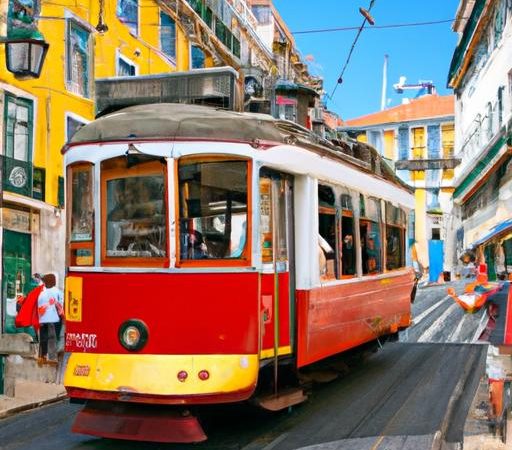Unexpected Discoveries in Tokyo’s Subway: Exploring Cultural Treasures Behind the Bustle


In the bustling metropolis of Tokyo, Japan, the subway system serves as a lifeline for millions of commuters every day. However, beneath the surface of the frenetic rush hour crowds and neon-lit stations lies a hidden world of unexpected cultural treasures waiting to be discovered. From ancient artifacts to modern art installations, Tokyo’s subway system is a treasure trove of surprises for intrepid explorers. In this article, we will delve into some of the most unexpected discoveries in Tokyo’s subway, showcasing the rich tapestry of culture and history that lies just below the surface.
Exploring Tokyo’s Subway: Uncovering Cultural Gems
Tokyo’s subway system is not just a means of transportation; it is a portal to Japan’s rich cultural heritage. Here are some key cultural treasures waiting to be discovered in the city’s underground.
1. The Edo-Tokyo Museum
Located near Ryogoku Station on the Toei Oedo Line, the Edo-Tokyo Museum is a fascinating destination for history buffs. The museum showcases the history of Tokyo (formerly known as Edo) from its humble beginnings as a fishing village to the bustling metropolis it is today. With a wide range of artifacts and exhibits, visitors can gain a deep understanding of Tokyo’s evolution over the centuries.
2. Tokyo National Museum
For art enthusiasts, the Tokyo National Museum is a must-visit destination. Situated near Ueno Station, this museum houses a vast collection of Japanese art, including paintings, sculptures, and ceramics. From ancient samurai swords to delicate ukiyo-e prints, the Tokyo National Museum offers a comprehensive overview of Japan’s artistic heritage.
3. The Ginza Kabuki-za Theater
Hidden beneath the streets of Ginza is the Kabuki-za Theater, a cultural landmark that has been entertaining audiences for over a century. This traditional Japanese theater hosts kabuki performances, a unique form of classical dance-drama that combines elaborate costumes, dynamic choreography, and emotive storytelling. A visit to the Kabuki-za Theater is a window into Japan’s theatrical tradition.
4. Modern Art Installations
In addition to historical and traditional cultural sites, Tokyo’s subway system also features contemporary art installations that add a touch of creativity to the daily commute. From colorful murals to interactive sculptures, these artworks provide a welcome respite from the hustle and bustle of urban life. Keep an eye out for these unexpected surprises as you navigate Tokyo’s subway network.
Benefits and Practical Tips for Explorers
- Take your time: While rushing from one destination to another is common in Tokyo, slowing down and exploring the city’s subway system at a leisurely pace can lead to unique discoveries.
- Get off the beaten path: Don’t be afraid to venture off the main tourist routes and explore lesser-known subway stations, where hidden gems are often waiting to be uncovered.
- Engage with locals: Strike up a conversation with fellow commuters or station staff to learn more about the cultural significance of different subway stops and landmarks.
Case Studies:
Yurakucho Station:
One of Tokyo’s oldest subway stations, Yurakucho Station is home to a vibrant shopping and dining district known for its izakayas (Japanese pubs) and street food stalls. Visitors can sample local delicacies such as yakitori (grilled chicken skewers) and okonomiyaki (savory pancakes) while taking in the lively atmosphere of this bustling station.
Shinjuku Station:
As one of the busiest train stations in the world, Shinjuku Station is a bustling hub of activity with endless shopping, dining, and entertainment options. From department stores to karaoke bars, visitors can explore a wealth of cultural experiences within the confines of this sprawling station.
First-Hand Experience:
“As a frequent traveler to Tokyo, I have always been intrigued by the cultural richness of the city’s subway system. From stumbling upon hidden art installations to attending traditional kabuki performances, each subway ride is an opportunity to immerse myself in Japan’s vibrant heritage. I highly recommend exploring Tokyo’s subway with an open mind and a spirit of curiosity to uncover the city’s unexpected treasures.”
Conclusion
In conclusion, Tokyo’s subway system is not just a network of trains; it is a gateway to Japan’s cultural heart. By embarking on a journey of exploration through the city’s underground, visitors can uncover a wealth of unexpected discoveries that showcase the richness and diversity of Japanese culture. Whether you’re a history buff, art enthusiast, or simply a curious traveler, Tokyo’s subway has something to offer everyone. So the next time you find yourself in Tokyo, be sure to delve beneath the surface and explore the cultural treasures waiting to be discovered in the city’s subway.
Tokyo is not just a city; it is a living, breathing metropolis that never sleeps. Everywhere you go, there is an endless sea of people, buildings, and attractions. But amidst all the hustle and bustle, there is a hidden world waiting to be discovered – the subway system. While many may see it as a means of transportation, for those who are willing to dig a little deeper, the Tokyo subway holds a treasure trove of unexpected discoveries and cultural wonders.
The subway in Tokyo is not just any ordinary transit system – it is an intricate network of tunnels and stations that reflects the city’s diverse culture, history, and traditions. From art installations and unique architecture to historical sites and traditional performances, the Tokyo subway is a goldmine of hidden gems that will enrich your understanding and appreciation of this vibrant city.
So, put on your explorer’s hat and get ready to embark on a journey of discovery as we unearth some of Tokyo’s most unexpected and fascinating cultural treasures hidden deep within its bustling subway system.
Art in Unexpected Places
One of the most striking and unexpected discoveries in Tokyo’s subway is the abundance of art displayed throughout the stations. Each subway station has its unique theme, and the walls, floors, and ceilings are adorned with colorful murals, sculptures, and installations that reflect the culture and history of the surrounding area.
For example, Hibiya Station, located near the Imperial Palace, features traditional Japanese motifs and depictions of the palace gardens. Meanwhile, Ginza Station, known for its luxury shopping district, boasts elegant and modern installations representing the glitz and glamour of the area. These artistic displays not only add beauty to the stations but also provide a glimpse of the neighborhood’s character and charm.
But perhaps the most famous art installation in a Tokyo subway station is the colorful and whimsical “Miracle Pine” at Shibuya Station. This intricately designed pine tree is made entirely from hundreds of plastic toy figures, and it serves as a symbol of hope and resilience, as it is dedicated to the victims of the 2011 earthquake and tsunami that devastated Japan.
Delve into History
The Tokyo subway system is not just a modern marvel; it is also a time capsule that takes you on a journey through the city’s rich history. Many stations have been built on or near historical sites, and the subway designers have incorporated elements of these landmarks into the station’s design. For example, Asakusa Station, located in the heart of the traditional and cultural Asakusa district, has a replica of the imposing Kaminarimon Gate – the main entrance to Sensoji Temple, one of Tokyo’s oldest and most famous temples.
Another station that offers a glimpse into Tokyo’s past is Nihonbashi Station. This station is built on the site of the historic Nihonbashi Bridge, which was once the starting point of five major highways that connected Edo (the old name for Tokyo) to the rest of Japan. Today, the station has a small museum that displays the original stone bridge piers and some artifacts, giving visitors a fascinating look back in time.
Cultural Performances
If you’re lucky, you may stumble upon a cultural performance while waiting for your train. Many subway stations in Tokyo have designated performance areas, where artists and musicians can showcase their talent. From traditional music and dance to modern performances and light shows, these impromptu events bring a sense of energy and entertainment to the otherwise mundane daily commute.
Furthermore, these performances also provide an opportunity for visitors to experience and appreciate Japan’s cultural heritage. They are also a way for local artists to showcase their talents and gain recognition, creating a vibrant and diverse arts scene in the subway.
Tips and Benefits for Exploring Tokyo’s Subway Treasures
– Take the time to look closely at the art and installations in each station. They often have hidden meanings and symbolism that can enhance your understanding of the surrounding area.
– Visit different stations to experience the different themes and artworks. You’ll be amazed at the variety and creativity on display.
– Don’t be afraid to strike up a conversation with the locals or other travelers at the station. They may have insights or recommendations for other hidden gems in the city.
– Keep an eye out for cultural performances, and be sure to show your appreciation by clapping or giving a small donation. It’s a great way to support local artists and immerse yourself in the city’s culture.
– Don’t be afraid to ask for directions or assistance from station staff. They are used to helping tourists and can provide valuable tips and recommendations.
In conclusion, the Tokyo subway is more than just a means of transportation – it is a cultural experience waiting to be discovered. From art and history to performances and interactions with the locals, exploring the subway system is a unique and enriching way to immerse yourself in Tokyo’s vibrant and dynamic culture. So, next time you’re in Tokyo, be sure to take some time to explore the hidden treasures behind the bustling subway.






